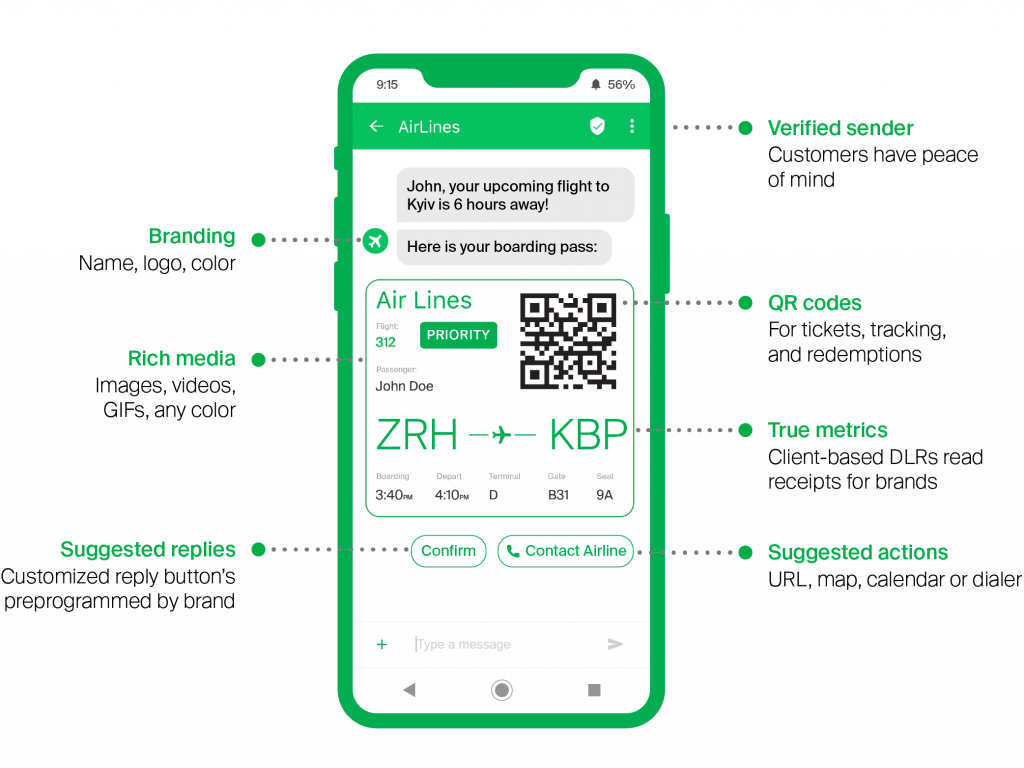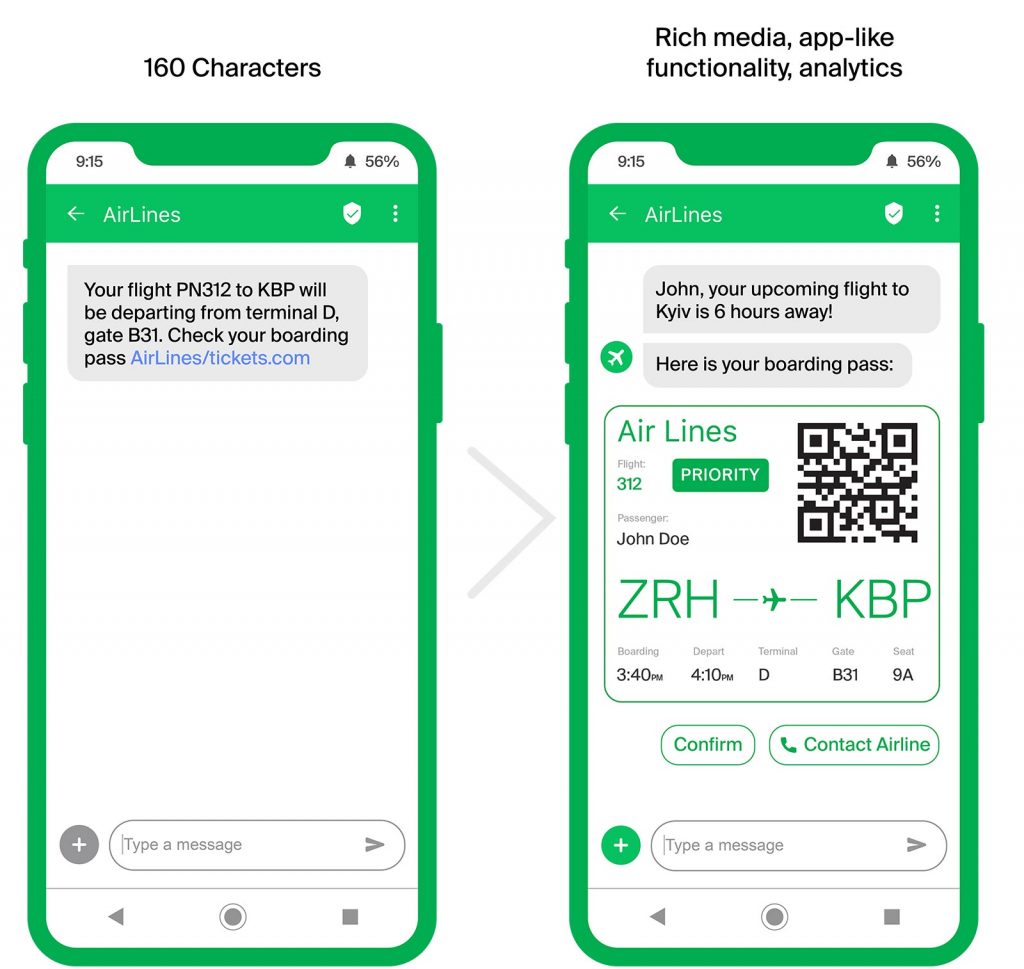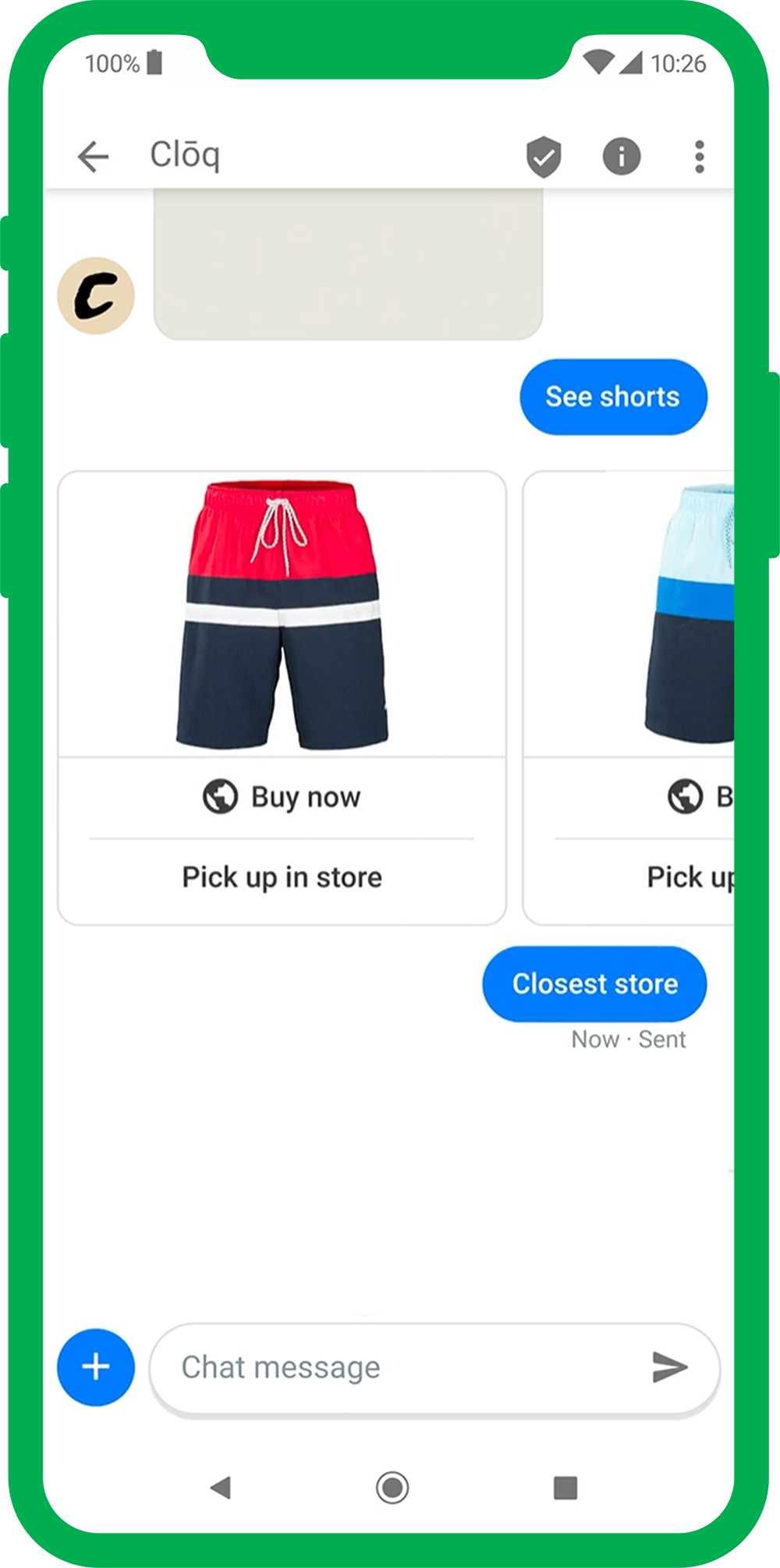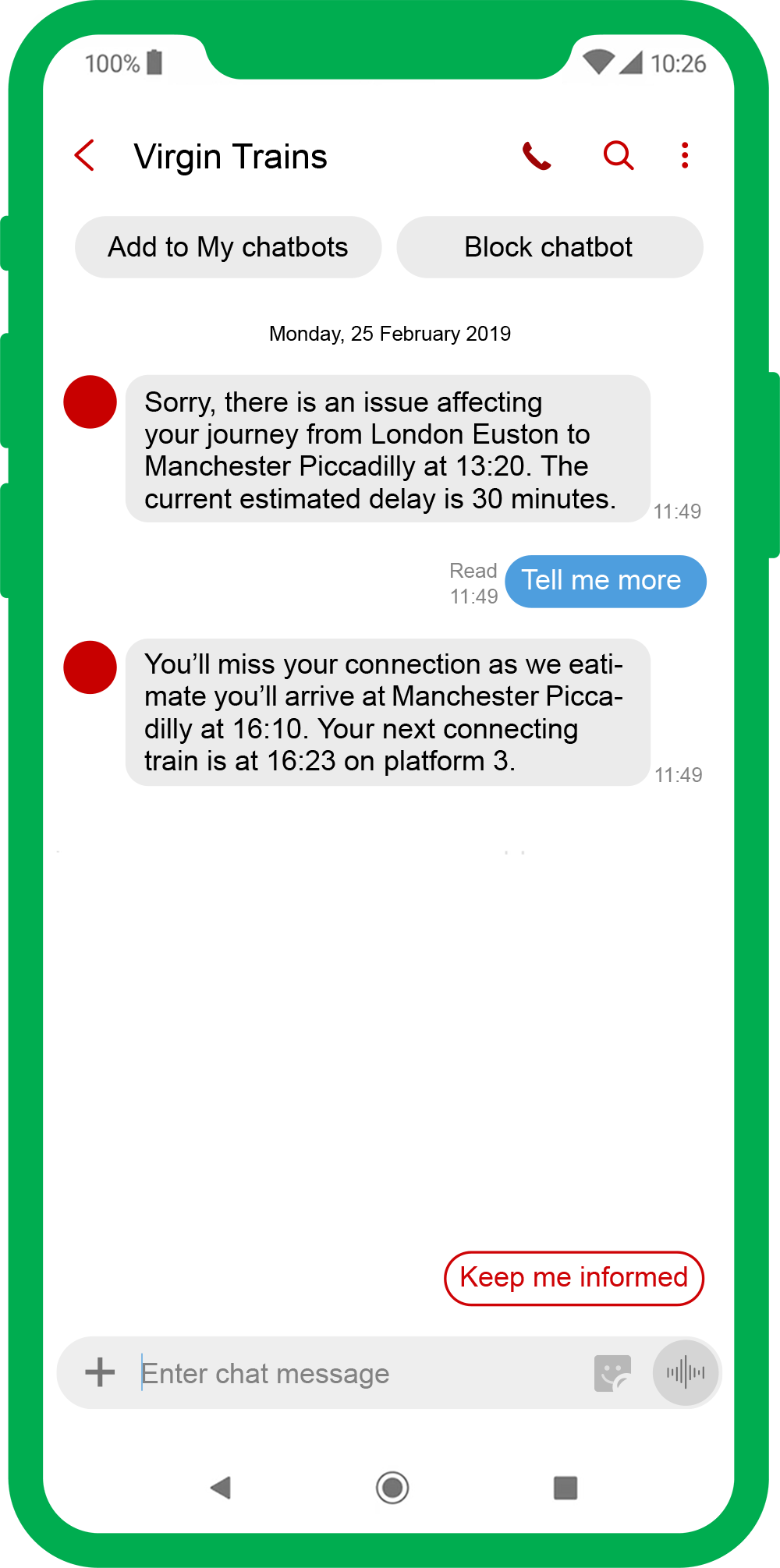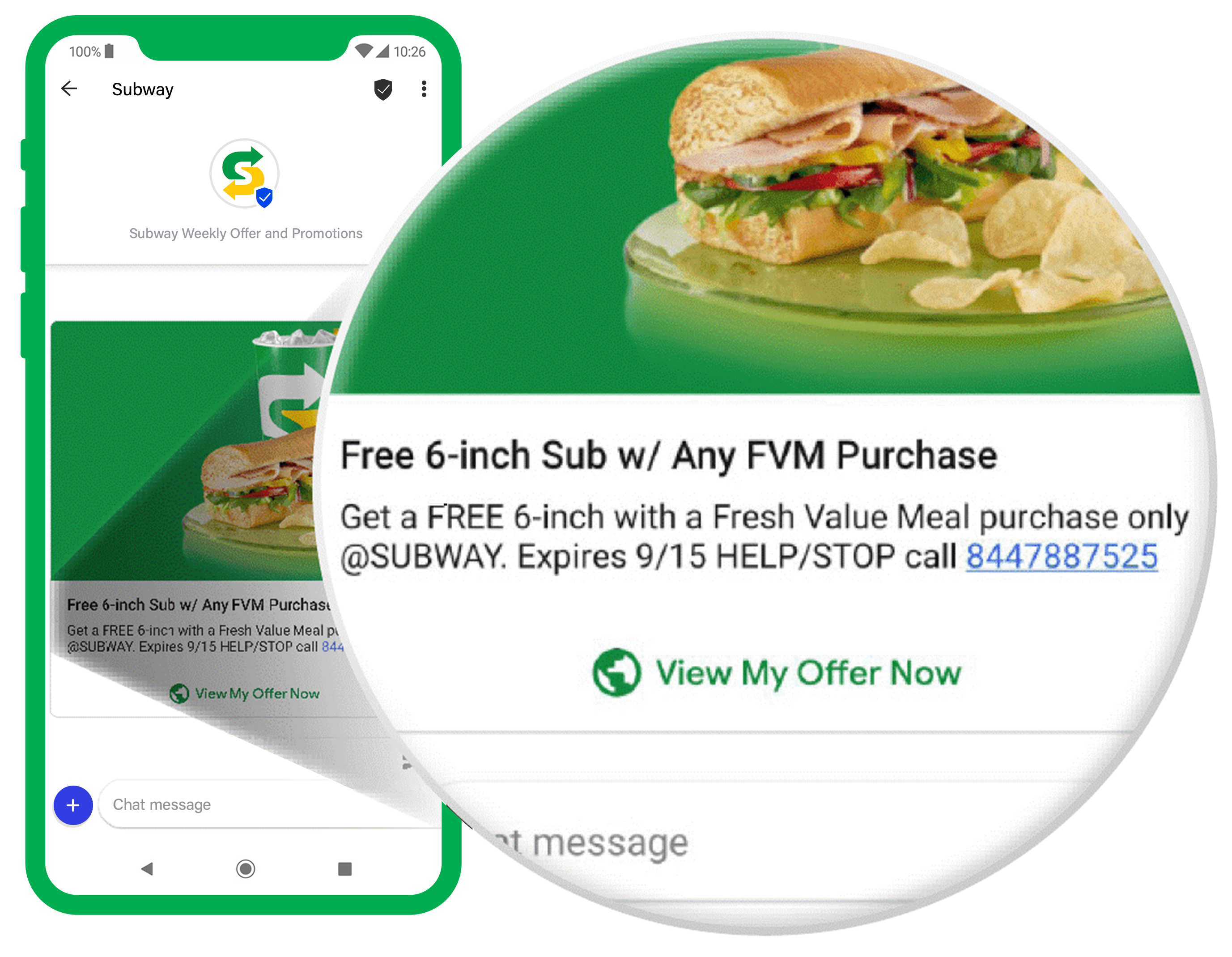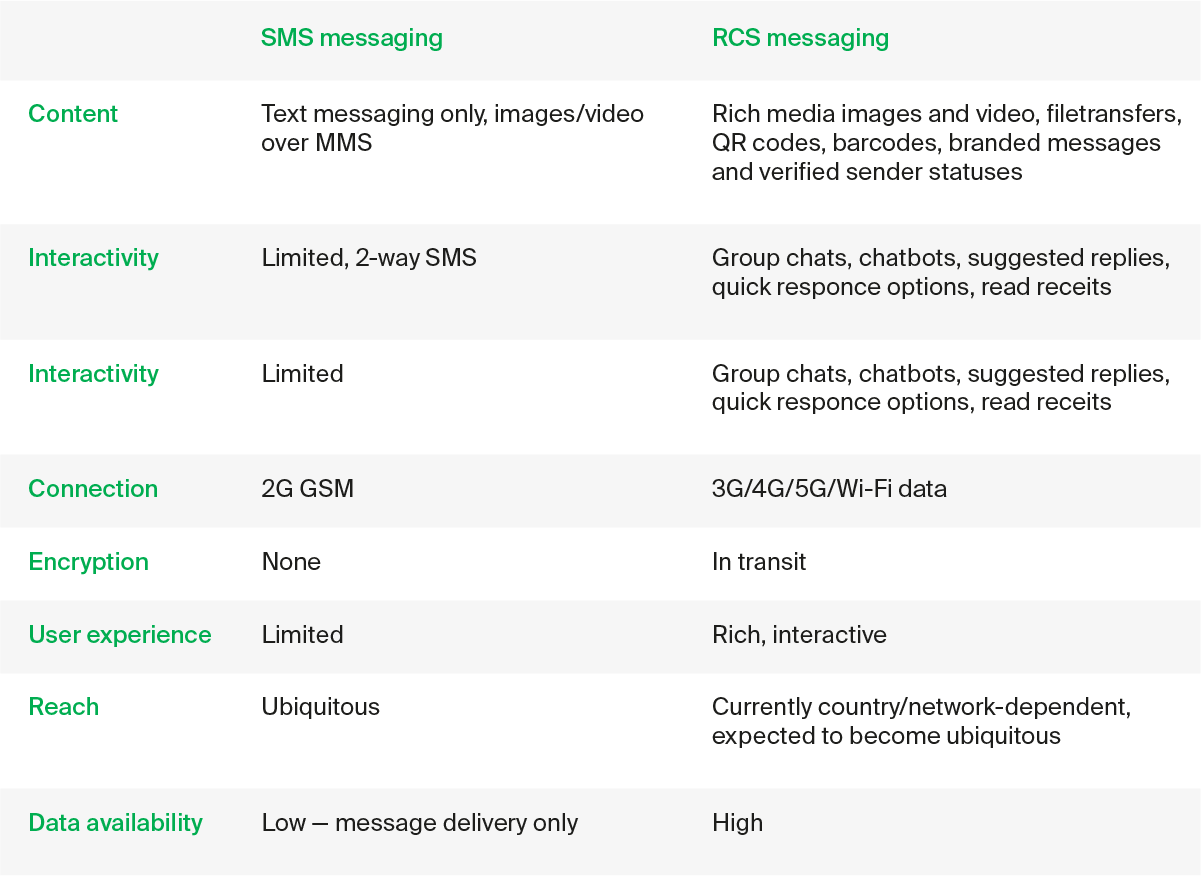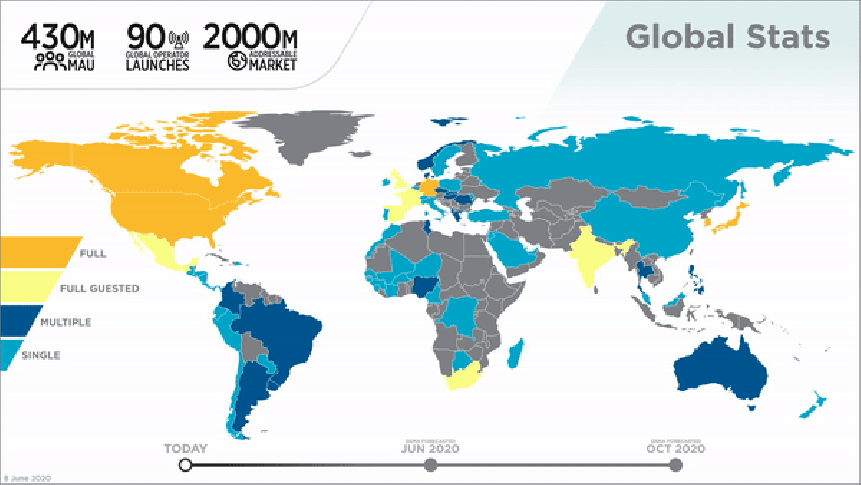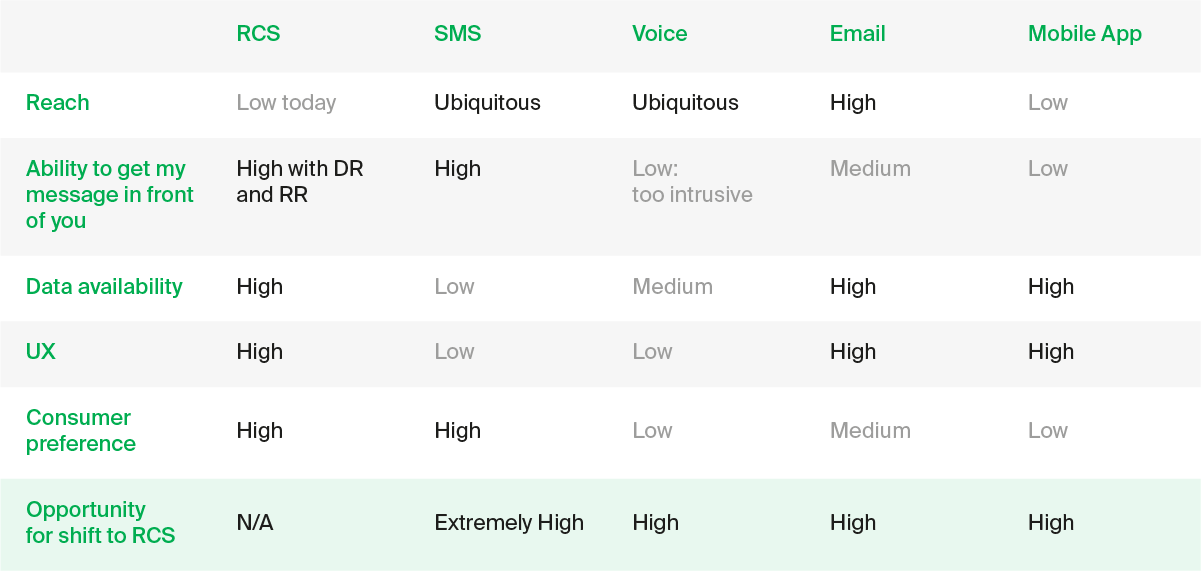It is the addition of rich features like images and videos that are probably the most visible innovation in RCS.
SMS messages have no real picture messaging ability – the closest is MMS (Multimedia Messaging Service), in which case SMS text messages can be sent along with MMS, but these can take different times to arrive and don’t represent a unified channel.
RCS, on the other hand, seamlessly integrates photos, gifs, videos, and their accompanying text. Users can send audio messages, share their location, and send files. SMS can’t offer these features (and only a few apps support all of them).
RCS also interacts with the voice call function, through enriched calling, meaning that users can send a message as they call someone, specifying the reason for the call or its urgency, or send media during a phone call.
There is another significant improvement when it comes to
enterprise messaging. RCS Business Messaging (RBM) provides “rich cards,” multimedia messages which weave together multiple elements and display them as a unified whole.
Companies like airlines or concert promoters can send tickets over RCS (rather than email or a clumsy MMS download), which contain a QR code or barcode for scanning alongside complete details for seating, dates, times, and so on.
RCS messaging is also
more interactive and versatile than SMS. RBM provides suggested replies and quick actions, which simply aren’t possible with older standards.
This lets subscribers take certain actions – like rescheduling an appointment, or changing airplane seats – or use information from the message to automatically create a calendar reminder or find directions in their map app.
And by weaving together elements like rich cards, quick reply buttons, and even chatbots, retailers can create a virtual storefront via
conversational commerce.
Interactive RCS chat can help inform customers or even complete a sale over the mobile channel, in a format not dissimilar to talking to someone in a shop (while being better
optimised for mobile than a website).

